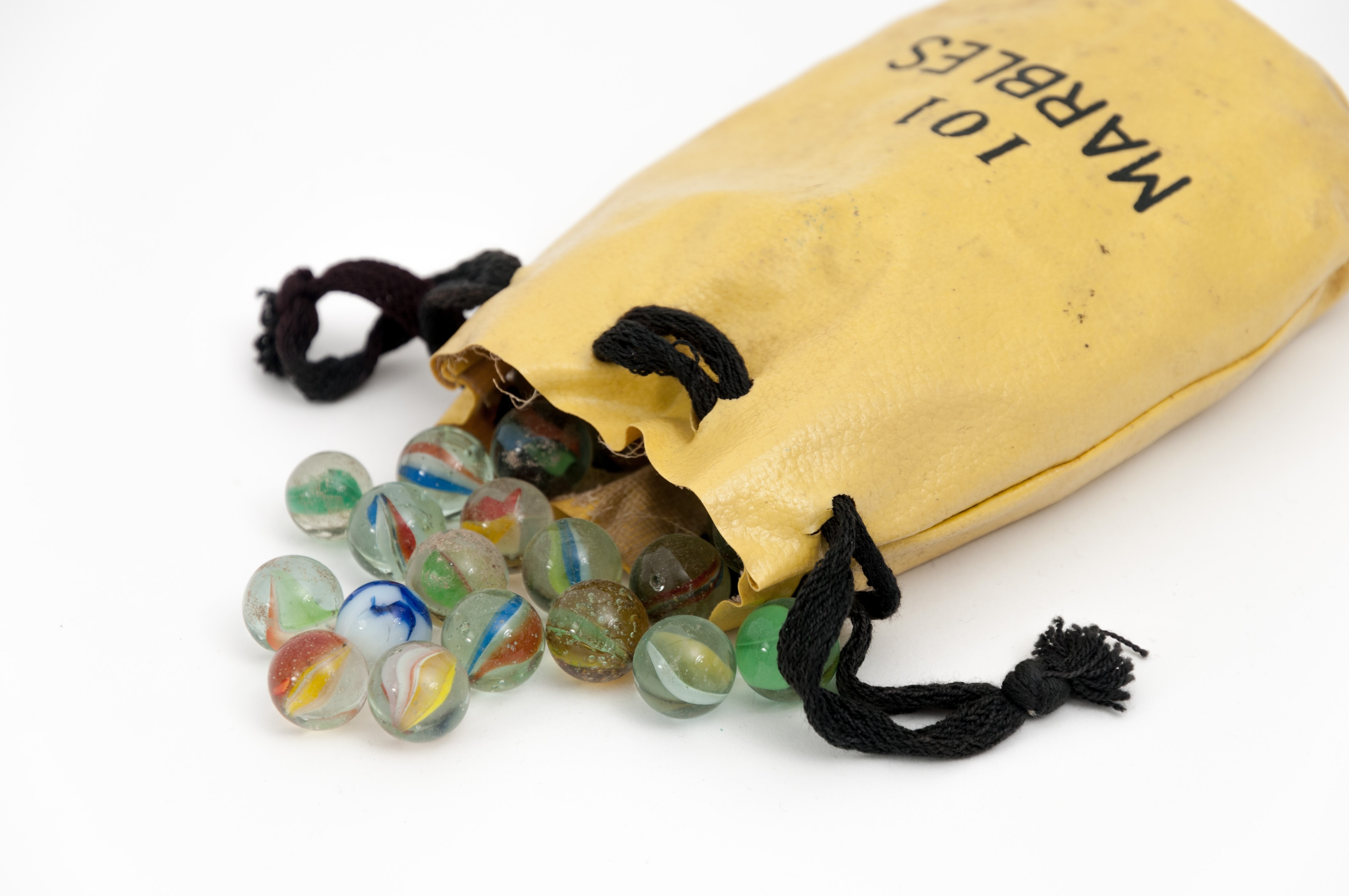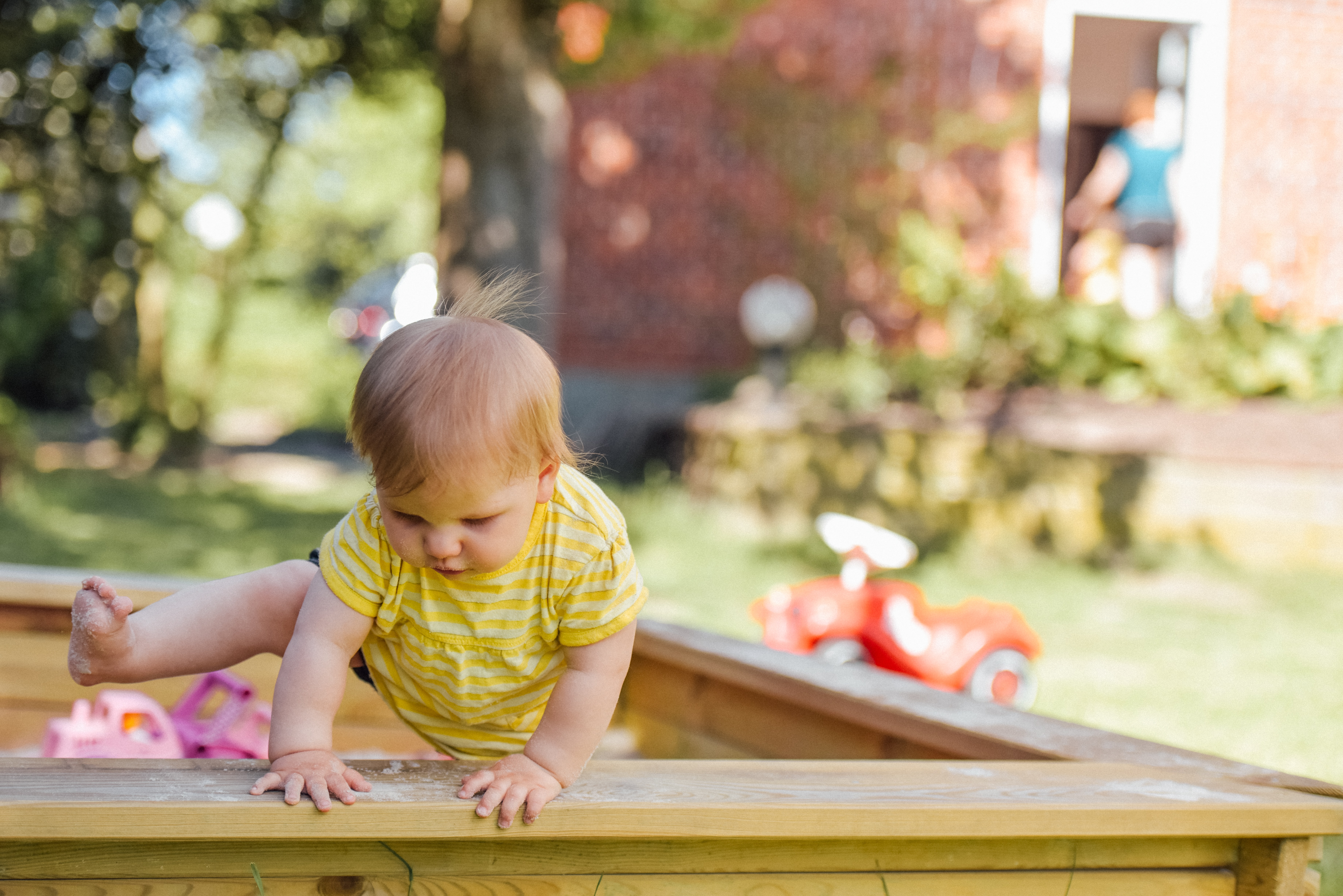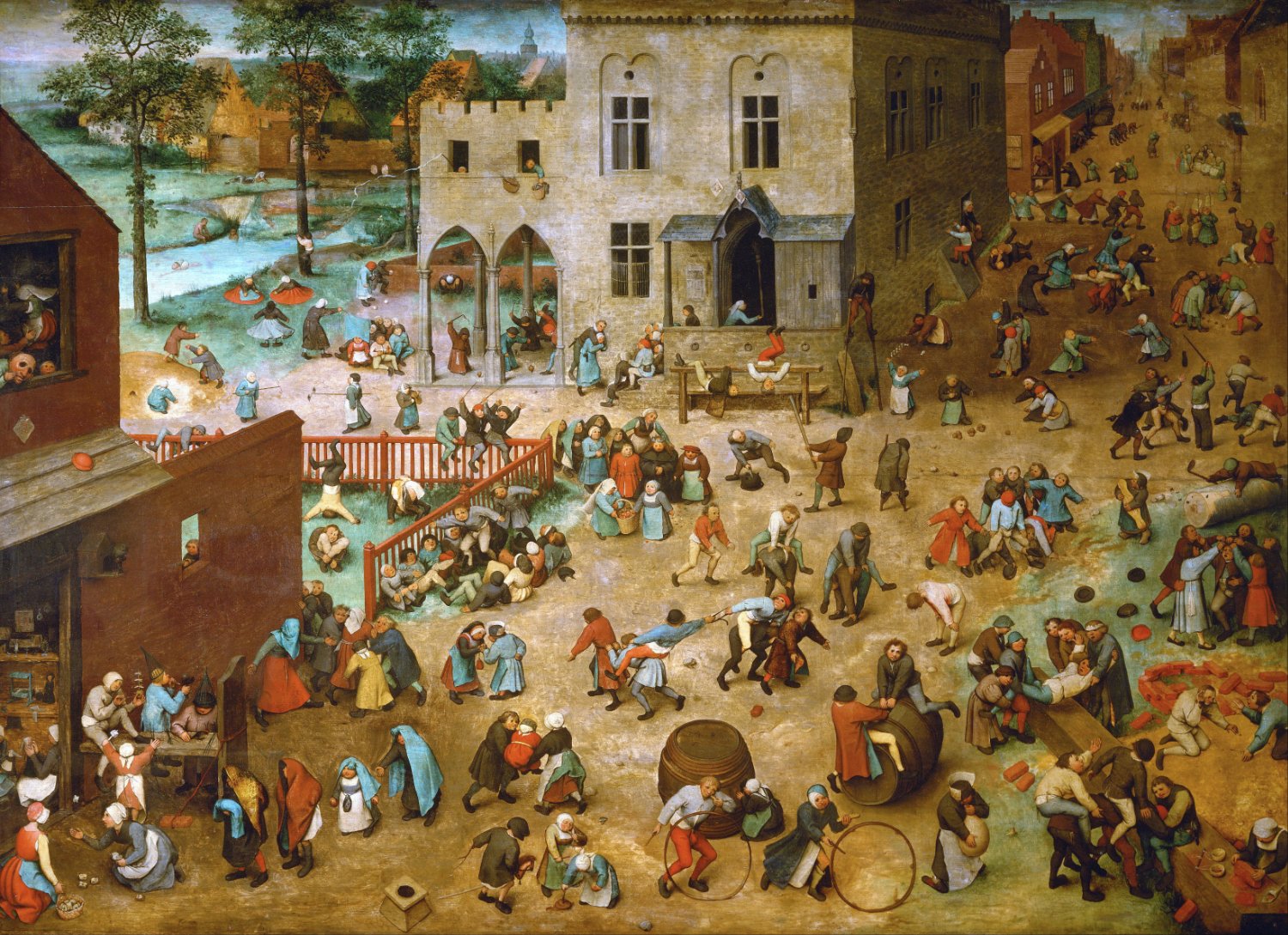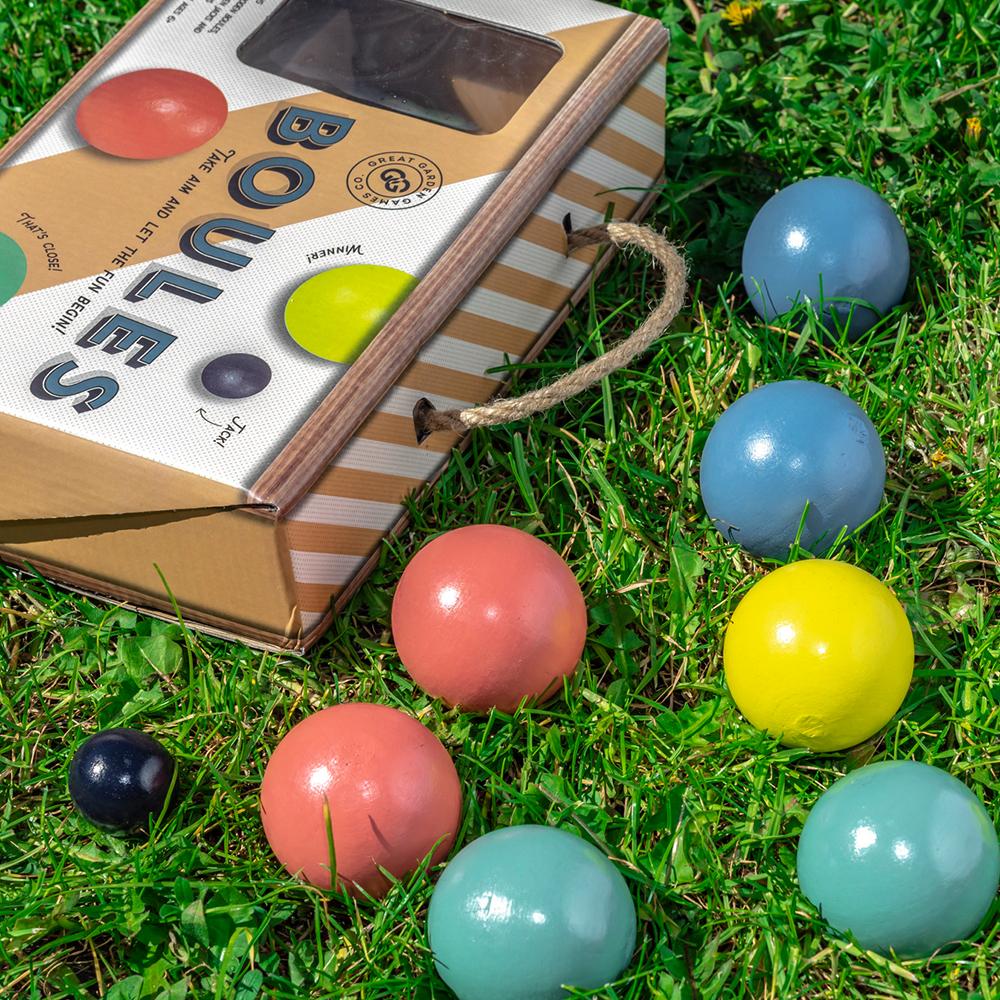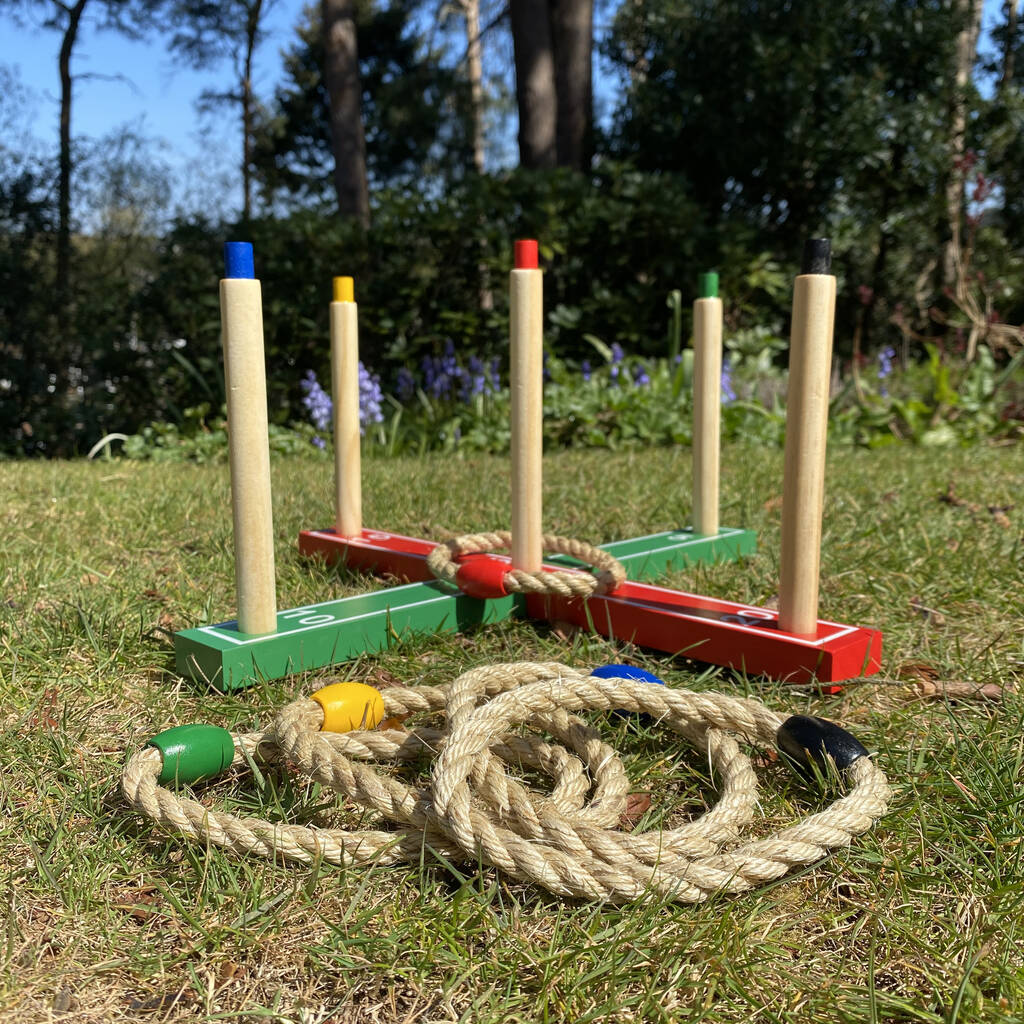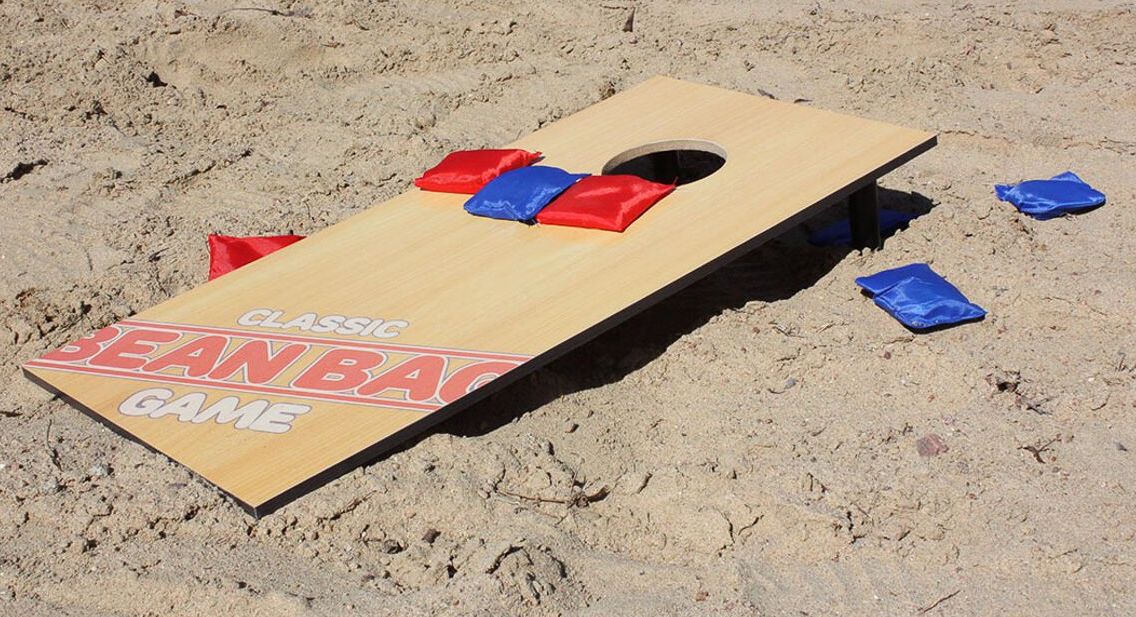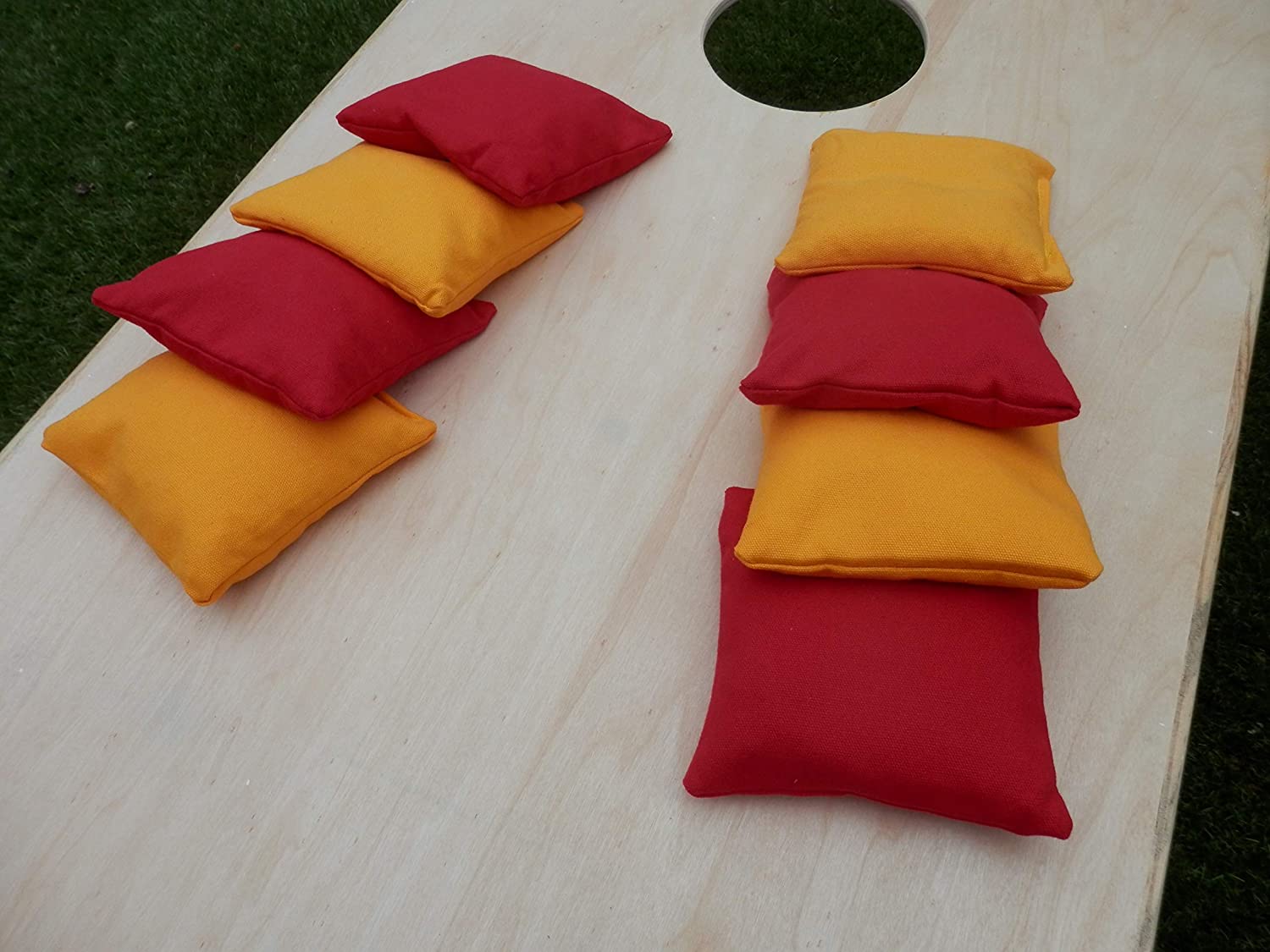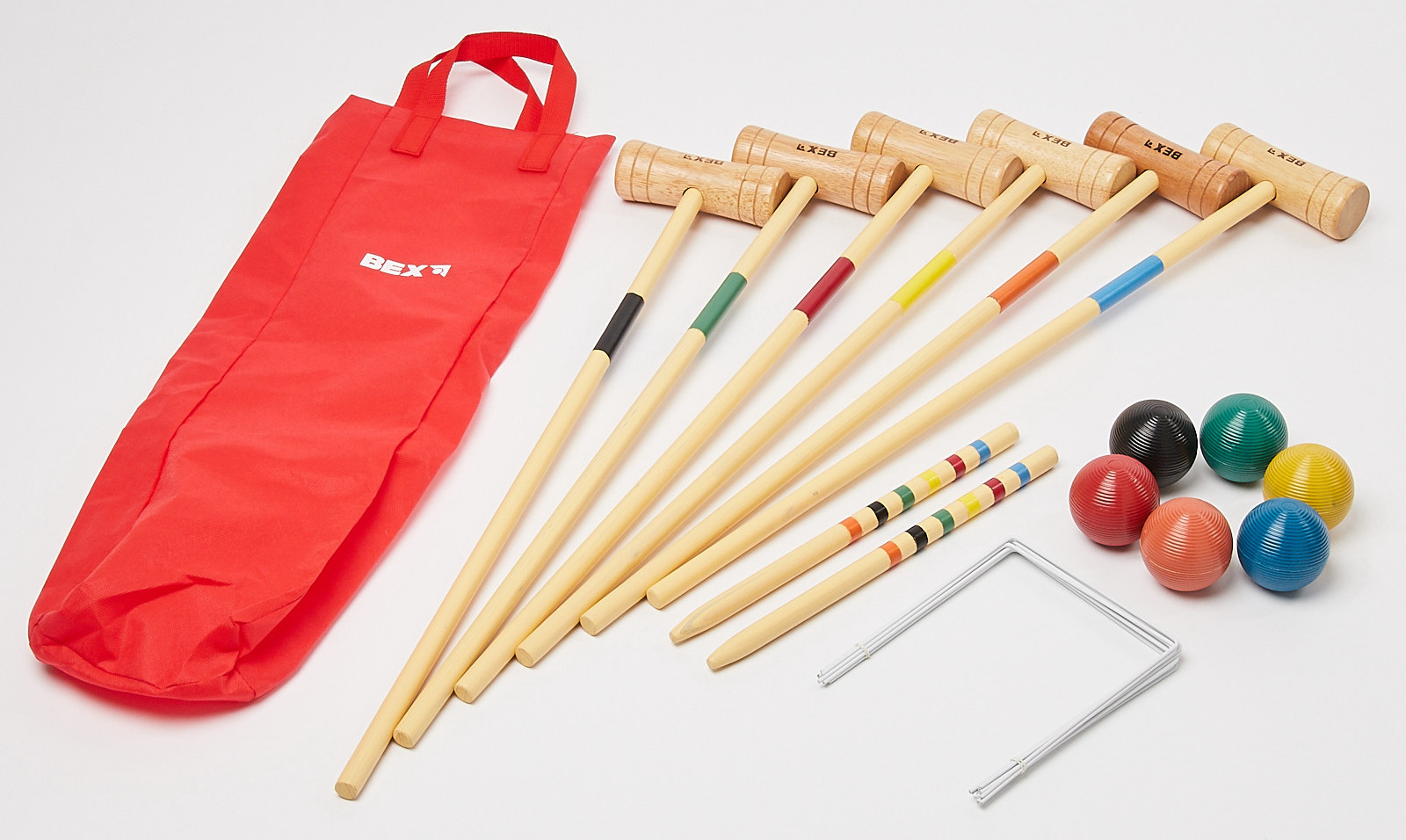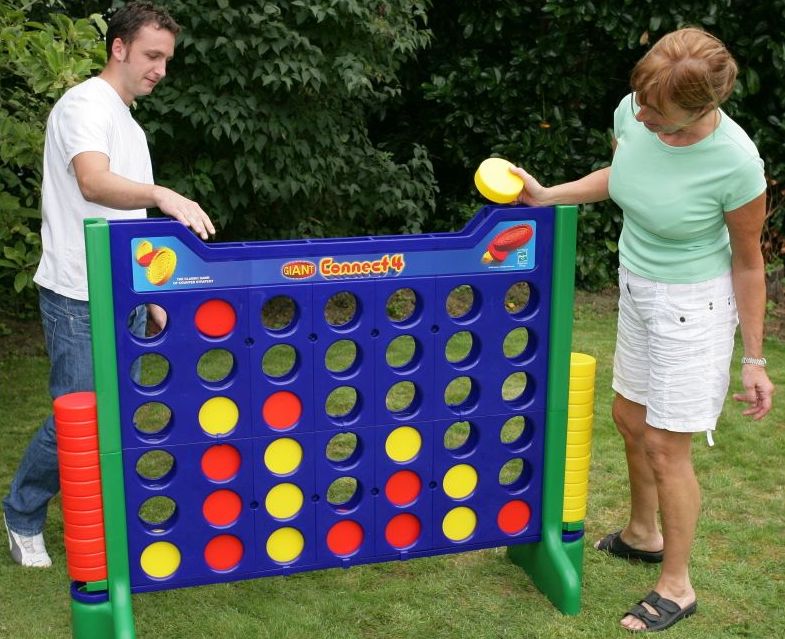Originally this article was going to be a guide to the best garden games but we started doing a little research into the history of garden games and we stumbled down a fascinating rabbit hole.
We will definitely come back to some sort of guide to or top garden games post in the future, but this month we wanted to try and unpick a little of the past, look at some of the fascinating stories of some games that have stood the test of time.
Garden games, outdoor games, street games, lawn games, folk games - There’s a number of different terms used but they all mean the same thing…
Games you can play outside. Games that go back millennia. Games have been an integral part of many different cultures around the world. Games form one of the oldest forms of social interaction, not just for children, but all ages.
Garden games, whilst often simple in their play, could even be said to be as important as say, politics or music. They’ve been passed down the generations. Culturally, their importance goes beyond ‘a bit of fun’.
Of course, that’s what they are, but they’re also much more than that.
They bring people together, they're a teaching tool, and in the past, they were used as a way to denote social status.
In the pastime of kings and queens, outdoor games were often given as gifts, and played in the palaces, gardens, courts and castles of royalty across the United Kingdom and beyond.
Marbles for example have been found in the tombs of Pharaohs and in the ruins of ancient Aztec temples.
And marbles are a great illustration of this fascinating history.
There is no right or wrong way to play with them, rules vary. Various materials have been used over the centuries to make them. Nobody can definitively say where the game originated.
The classic glass marble that we all know and love in this country date back to the early 20th century. According to the marble entry on Wikipedia:
Some of the first mass produced glass marbles were made in Akron, by James Harvey Leighton. In 1903, Martin Frederick Christensen - also of Akron, Ohio - made the first machine-made glass marbles on his patented machine.
However, we know that marbles date back much earlier than that...
Little white marble-like round pebbles were found in an Austrian cave inhabited by our Palaeolithic ancestors. What they were for, if they were even a game, we could only speculate.
The ancient Greeks on the other hand definitely played a game known as Omilla with smooth round seeds that were very similar to the game of Ring Taw - a marble game popular in the late 1700s which is similar to pool/billiards but played on the ground - and is still played in various forms around the world to this day.
Even the Romans were well known for having various marble-type games in their literature. There’s certainly no doubting that they disseminated the game around the empire. There are some wonderful murals in the city of Bath that show children playing with marbles, and there’s a variety of painted clay Roman marbles on a display at the British Museum!
And it isn’t just marbles. There’s a host of different garden games that can tell a similar tale.
Some of the earliest and most common ancient garden games were made from bone, especially the Talus (a small bone that sits between the heel bone and the tibia and fibula) or knucklebone, as well as rounded shells, pebbles, etc.
The evolution of traditional children’s garden games
We know that anything written on Wikipedia needs to be taken with caution. It is open to editing. That said it is still a great resource.
The fact they don’t really have a definitive listing for the history of garden or outdoor games was one of the main reasons we wanted to try and write this article.
Of course, it is a subject close to our hearts, as is anything garden related.
However, what they do have is some interesting articles around the more general history of games, and an interesting page entry that lists traditional types of children’s games that they define as:
Those that are played informally with minimal equipment, that children learn by example from other children, and that can be played without reference to written rules. These games are usually played by children between the ages of 7 and 12, with some latitude on both ends of the age range.
They go on to say that:
Children's traditional games (also called folk games) are those that are passed from child to child, generation to generation, informally by word of mouth. Most children's games include at least two of the following six features in different proportion: physical skill, strategy, chance, repetition of patterns, creativity, and vertigo.
It is a fascinating list and includes many games that are still being played by our children and grandchildren.
Things like hopscotch (below), jump rope and our old friend marbles.
The majority of the games listed have their own page entry too, hence the rabbit hole, however, it makes for some fascinating reading. These are games that have not only stood the test of time but have evolved and changed with it!
That is what the Lazy Susan team and I found fascinating when researching this post. Not just the fact that many of these games are thousands of years old (although that in itself is staggering) but how they’ve endured and adapted as they’ve been passed down.
Before our lifestyles became more mobile/online, kids lives were centred around their immediate community. They had to make their own entertainment.
Certainly in the built-up environs of a larger inner city, the street was the playground, so they had to create fun out of whatever they could. If that was just a group of 3 or 4 friends, then the choice is only limited to the imagination. But it is how these games seem to transcend generation without any written rule, they just sort of continue, and adapt.
There’s a beautiful painting by Dutch artist, Pieter Brueghel from 1560 called Children's Games (see below) that provides a fascinating document of children playing. It shows around 90 different games, most of them being played in gardens, streets and courtyards.
It’s a wonderful insight into what kids were playing close to 500 years ago, with many recognisable to us today.
Now, we appreciate that it was the artist's intention for this work to be more than just an illustrated encyclopaedia of children's games… Brueghel’s message was more that, in the mind of God children’s, games are just as important as the activities of their parents. However, artistic reasoning aside, it simply shows us that, according to Wikipedia:
The children, who range in age from toddlers to adolescents, roll hoops, walk on stilts, spin hoops, ride hobby-horses, stage mock tournaments, play leap-frog and blind man's bluff, perform handstands, inflate pigs' bladders and play with dolls and other toys.
From lawn sports to garden games
I suppose no history of garden games would be complete without a closer look at lawn games.
Much of the sports we love to this day have their history on the lawns and gardens of the well-heeled.
We touched on this in our recent Can garden furniture go on grass? article too.
The leap sounds an odd one at first glance but in that post, we took a look at the rise of the Great British lawn and how sports played a big part in their rise in popularity and adoption.
The history of lawn games is intrinsically linked to the garden or village green.
Much of what we know as 'modern' sport was derived from various European garden games, many of which gained their popularity as the leisure activities of royalty.
Tennis for example was created in 12th century northern France, and Louis X of France, Francis I of France and Henry II were all big proponents of the sport.
Golf originated in Scotland where it was initially banned by James II in 1457, but then that was lifted by keen golfer James IV in 1502, although variations of the game go back much longer than that.
And then there is of course cricket, football and rugby, which Wikipedia say:
Cricket can be traced back to Tudor times in early 16th-century England and the modern rules of association football and rugby football are based on mid-19th century rules made to standardise the football games played by English public schools. These team sports were spread worldwide by the influence of the British empire.
Garden throwing and ball games
What a lot of these sports have in common is that there is often garden game versions or variations. Sets you can buy for children or ways we adapt to play them in the smaller more confined space of our back gardens, beaches, etc.
Take bowls, a game the dates back to the middle ages with many variations around the world…
Garden sets such as the Boules Set pictured above from Party Pieces (pictured above) are still a best seller. Croquet is another sport where it was almost tailor-made for the garden. Originating in Ireland in the 1830s, it came over to England in 1850 and is noted as one of the first games where women could compete equally alongside men.
Other garden games have an altogether more sinister history.
Take Quoits for example. This ancient Greek term for a throwing disc (or Discus) was originally developed with razor-sharp edges and thrown as a weapon. 4000 years later and the sharp edges are gone but the Frisby is still with us.
The game of Quoits itself is also still a very popular garden game too.
Believed to have originated in the early middle ages amongst mining communities, where horseshoes were thrown at pins in the ground, this is another game that’s evolved over the years.
Most modern-day garden versions, such as the one pictured above from Not On The High Street, use wooden pegs and rings made from rope or plastic, however, the premise remains.
When I was younger, if my sister and I were told to go and play in the garden, then it was often with a ball. We’d make up games with nothing more than a tennis ball or football. Many cultures around the world have created various types of ball games. On Wikipedia, they state that:
Many types and varieties of ball games exist. Several cultures have created forms of ball games. For example, the Maya and Aztec peoples played a ball game using a rubber ball. The Yanoama people in northwest Brazil played a game using a ball made from the bladder of a monkey, in which the ball would be hit upwards by participants, who would play the game in a circle.
Bocce is another popular garden ball game where modern-day sets can still be purchased. Similar to what we know in this country as lawn bowls, in France the game is known as Pétanque. However, this is an ancient game with its roots in the Roman Empire.
The rules are relatively simple, and it typically involves rolling a ball on the ground in an effort to place it near a smaller ball. The video below from Gather Together Games shows how you can play a simplified version in your own garden:
In the US they have a popular game known as Corn Hole, you often see variations of it at fairgrounds in the UK too. However, its lineage is as a garden or backyard game as they’re termed over the pond.
You have an angled board with holes cut in it and the aim is to throw a ball or beanbag through the hole to score points or win prizes in the case of a fair. Booghe sell a great kids version (pictured above), whilst Norfolk Boards on Amazon.co.uk have a more grown-up version (pictured below):
Classic garden games
There’s no doubting that throwing games are one of the most popular forms of garden gameplay. However, many classic garden games need nothing more than a little imagination.
Games that again, have been passed down from generation to generation, rules that are often made up as you go along, or to suit whoever must win.
Games like hide and seek for example. Everybody knows the line; “ready or not, here I come”. It has been around forever. Everybody knows how to play it but there are many variations to the rules. There’s even an international championship known as the Nascondino World Championship.
Again, it is so old, knowing its true origin is impossible to determine.
However, probably the earliest written reference to the game itself is, according to brittanica.com, as follows:
Hide-and-seek appears to be equivalent to the game apodidraskinda, described by the 2nd-century Greek writer Julius Pollux. In modern Greece hide-and-seek is called kryfto. The game is played throughout the world. In Spain the game is called el escondite, in France jeu de cache-cache, in Israel machboim, in South Korea sumbaggoggil, and, in Romania de-av-ati ascunselea. Hide-and-seek is known throughout South and Central America under such names as tuja (Bolivia), escondidas (Ecuador and Chile), and cucumbè (Honduras and El Salvador). There are many variants on the game. For instance, the Igbo children in Nigeria play oro, a combination of hide-and-seek and tag in which the seeker stands in the centre of a large circle that has been drawn in the sand and tells other players to hide. The seeker then steps out of the circle, finds, and then chases the other children, who must run into the circle to be safe. The child touched before reaching the circle must be the next seeker.
In England, it also pops up in Shakespeare's Love's Labors Lost, with the line; "all hid, all hid, an old infant play”.
Hopscotch is more of a playground game I suppose but many of us with children and grandchildren have drawn the familiar chalk grid onto our patios.
The name comes from the portmanteau of ‘hopping’ and ‘scotch’, which is said to be derived/corrupted from ‘scratch’. In other words, scratching the grid on the ground. However, if you were a Roman Soldier, it was definitely not a game you looked forward to. It was a brutal form of exercise that meant full armour and hop, skipping and jumping across a large football pitch-sized grid.
Capture the Flag is another popular garden or street game from the US with a darker origin. However, unlike Hopscotch, which was simply a part of a Roman soldier's brutal training regime, this is based on the American Civil War.
The aim of the game is to kill (not really) or capture all your enemies and take their flag. And whilst Blind Mans Buff may seem like a harmless bit of fun today, you definitely wouldn’t want the kids playing it with old Henry VIII as it was very much one for the grown-ups!
Garden games for all the family
Much like garden throwing games, ball games often have their origins in sport. Either shifting from fun to competitive, or as is the case with modern sets designed for play in the smaller confines of the garden, constructed from materials that a less likely to smash a window.
One of the best examples of such a ball game is Croquet, which like much of the games we’ve discussed in this article has a rich history and many variations of play. The origins of croquet are described on Wikipedia as follows:
The first explanation is that the ancestral game was introduced to Britain from France during the 1660–1685 reign of Charles II of England, Scotland and Ireland, and was played under the name of paille-maille (among other spellings, today usually pall-mall), derived ultimately from Latin words for 'ball and mallet' (the latter also found in the name of the earlier French game, jeu de mail). This was the explanation given in the ninth edition of Encyclopædia Britannica, dated 1877.
In his 1801 book The Sports and Pastimes of the People of England, Joseph Strutt described the way pall-mall was played in England as follows:
Pale-maille is a game wherein a round wooden ball is struck with a mallet through a high arch of iron, which he that can do at the fewest blows, or at the number agreed upon, wins. It is to be observed, that there are two of these arches, that is one at either end of the alley. The game of mall was a fashionable amusement in the reign of Charles the Second, and the walk in Saint James's Park, now called the Mall, received its name from having been appropriated to the purpose of playing at mall, where Charles himself and his courtiers frequently exercised themselves in the practice of this pastime.
Garden croquet is still an incredibly popular game across the UK, the rules are simple, and as long as you’ve got a good patch of grass, you can set up your hoops. Oliver Bonas have a beautiful traditional wooden set (above) that contains mallets, markers, balls and a bag to keep them in when not in use.
A popular outdoor game that has probably had the biggest shift is Hoop & Stick or Graces as it was known over 100 years ago. Defined on Wikipedia as follows:
Graces is played with two people. Each person gets two dowel rods. Then, one of the players takes a Wooden hoop and, pushing apart the two rods, sends the hoop into the air for the other player to try to catch. The winner is the player who is first to catch the hoop ten times.
This game itself was created to promote grace and dexterity in children, primarily young girls, but Hoop & Stick games are not something you see much of these days.
However, the Hula Hoop element has survived, and its appeal in the garden is still strong. They can be incorporated into many games, including things like obstacle courses, skipping and running, it remains one of the most versatile garden games.
We could go on but hopefully, we've piqued your interest as much as it did ours?!
At the end of the day, whilst garden games are ultimately about fun, they’re also an important way of keeping our kids fit and helping them develop numerous skills.
And garden games aren’t just for the kids too…
There’s plenty for us adults to do too. From free DIY garden games to companies that can hire large outdoor games parties.
One of the biggest trends we’ve seen in recent years is a rise in oversized garden games such as outdoor chess, giant Jenga and garden Connect 4 such as the set from Garden Lines (shown above).
Garden game videos
If you’re in need of a little outdoor play inspiration, then there are some great videos on YouTube, and we’ve pulled together a few of our favourites together:
In this first video, Alison Hammond demonstrates some of the best garden games for the family on This Morning:
Next up we have a video from Dave Has who has some great tips for some DIY garden games:
HGTV have also given their take on some of the best DIY garden games in our next video:
And last up we have this top 10 rundown of the best family garden games from Best Guider:
We’ve really enjoyed writing and researching this article. I hope you found our potted history of garden games as interesting as the Lazy Susan team and I do?
Of course, it is by no means a definitive guide, and this is definitely a subject matter we’ll revisit. We’ve only scratched the surface really…
There are things like Bubble Sets, Inflatables, Swing Ball, Garden Football and Golf Sets, Outdoor Kitchens, Playhouses and Slide & Swing Sets that we’ve not even discussed.
However, it’s nice for us to take a little detour away from garden furniture. Visit other parts of the garden. Garden Games is a subject we’ll definitely be coming back to, so please watch this space for more outdoor fun related posts.
Also, if you’re playing some garden games this summer, and your Lazy Susan Garden Furniture is in the shot or being used to play on, then please send us some photos for our Do Some Good charity campaign.
Simply take a photo of your Lazy Susan furniture in your garden and we’ll donate money to our chosen charity partners.
Send your snaps to [email protected] or tag us on Instagram or Facebook @lazysusanfurniture!





